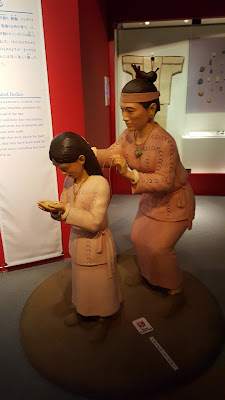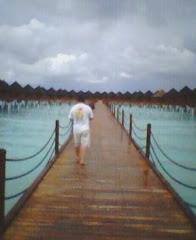今日の予定は妻のおばあちゃんのお墓参り。そのあとは歩いて青森県立美術館。僕の目当ては奈良美智の青森犬。
Cherry blossoms in bloom / 桜がまだ咲いてます
We were going to take a short cut through a Sanatorium that was created for patients suffereing from Hanson's disease. In other words, a modern day lepers colony (only we no longer use the term lepers). My wife informed me about this place after we had watched the movie [Sweet Bean]. The sanatorium in Aomori is really a large community. It reminds me of Western State Hospital in my neighborhood back in the States.
妻のおばあちゃんが眠ってる霊園は青森に作られた保養園の向かいにあるため、近道で行けると思った。先日邦画の「あん」を観て、日本がこういうところがあるのを初めて知った。妻は昔からあると言って、やっぱり当時もそこに行くのは禁じられてた。ハンセン病の患者たちが生活する場所でもあった。 歩きながら本当にここ通って良いか妻が不安になった。ま、立入禁止とか書いてないので、別に良いんじゃない。アメリカの実家の近くにある精神病院と似た様な雰囲気。
Remnants of a shrine.昔あった神社みたい。
This must have been the hand purification basis.
これは多分神社の手水舎だった。
The torii is still standing.鳥居は普通に残ってます。
This shrine, a post office, and other such buildings were all part of the Sanatorium. As a law, patients living in this community were not allowed to leave. It was only in 1994 when these some seriously prejudicial laws against patients of Hansen's disease was repealed. But people still fear what they don't understand and many of the patients living in this community have nowhere else to go. A sad truth but a part of Japan's history.
この神社や、郵便局などは全て保養園の患者たちにあったため。なぜと言えば、法律でハンセン病の患者たちはここから一切出られないルールがあった。1994年でハンセン病の患者に対する法律が廃止された。現在ここで生活してる人々も帰る場所がないからずーとここしか知らないみたい。
This is a monument to the children that were not allowed to be born. Patients with Hansen's disease were often made sterile against their will. Not only were they not allowed to leave the community, they were not allowed to have children. It seems strange that Japan was still holding to some medieval practice of hiding what they don't want the public to see.
これは慰霊碑です。ハンセン病患者が子供を作るのも禁じられた。銘刻を読むと「生まれる事が出来なかった子供達の慰霊」。なんだか凄い悲しい気持ちになった。
Church of St. Michael / 聖ミカエル教会
We discovered that the Sanatorium really was made so patients couldn't leave. We had to retrace our steps and take the long way to the cemetery.
歩きながら気づいたことがあった。本当にハンセン病の患者たちが保養園から出られない様に作られてる。 また入口に戻って、霊園を目指した。
Oshaka-sama / お釈迦様
My wife's family plot. We came here to pay respects to my wife's grandmother.
妻の先祖代々のお墓。妻のおばあちゃんの為に会いに来た。
Having a snack with Obaachan.
おばあちゃんにご挨拶。
We then headed down this road to go to the Aomori Museum of Art.
おばあちゃんと離れえて、この道に歩いて青森県立美術館を目指した。
But before going to the museum, we came upon the Jomon-ji Yukan. Inside the building features the Sanmaru Museum which is free and shows displays of how life was like during the Jomon period (approximately 12,000 B.C. - 300 B.C.)
青森県立美術館に辿りつくまえに、縄文時遊館に来た。ビルの中にさんまるミュージアムがあり、縄文時の生活や発見されたものが展示されてます。
Aomori Nebuta Float (a small one) / 青森ねぶた (小さいやつ)
Don't you like the sign that says "This way" with the kid pointing in the other direction.
順路のサインと少年が指さしてる歩行が違うのはちょっと面白いなと思った。
4,000 B.C. or so
What a catch!!
良いのとっだと!!
Help me! / 助けて!
Replica of an adult grave (burial pit) / 大人の墓
We would now head outside as well and check out the Sannai Maruyama site which is a Jomon period archeological site but that will be for the next post.
私たちもかれから山内丸山遺跡を探索します。でもそれは次のネタです。




































.jpg)



No comments:
Post a Comment